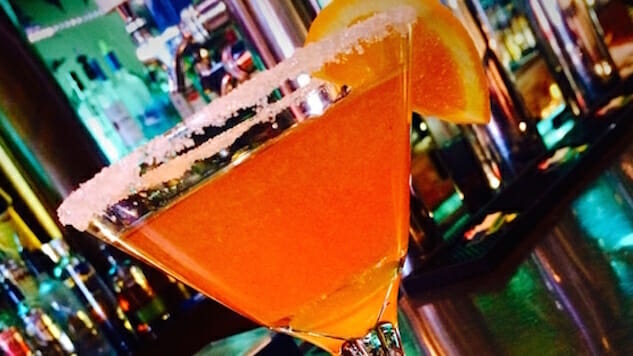Screw the Cosmo; Order a Sidecar Instead
Photo by Jim Sabataso
Few cocktails have become as maligned as the Cosmopolitan. In the 1990s and early 2000s, the Cosmo was queen. Though its origins are likely rooted in the gay bar scenes of either Miami or Provincetown, this dolled up riff on the Cape Codder began to turn heads when a bartender began serving it up at New York’s legendary — and at the time incredibly hip — Odeon restaurant. The Cosmo’s later association with the HBO TV series Sex and the City propelled it into the mainstream and made it the bane of bartenders who found the cocktail to be simplistic and poorly crafted — in other words, basic.
A combination of vodka, Cointreau, lime juice, and cranberry juice, the fundamental composition of the Cosmo is sound; it’s essentially a variation on a sour (base spirit, citrus, sweetener). However, vodka is not a flavorful spirit, and cranberry juice is both sweet and tart. That combination only succeeds in masking the vodka rather than incorporating it into the cocktail. As cocktail guru David Wondrich put it, “If a cocktail is alchemy, this is just mixing.”
Depending on its perpetration, the Cosmo can range from sweet verging on cloying to bland and dull. Too often bartenders will take shortcuts using an inexpensive triple sec in place of the Cointreau and artificial lime juice instead of the real stuff. Add in some pre-mix Cranberry juice from a soda gun, and you’ve got a cocktail unworthy of being served at a college dive bar.
Fortunately, the current cocktail renaissance has produced a new generation of drinkers with more sophisticated palates and an appreciation for more complex flavors. The Cosmo has begun to fade into obscurity, but there are still those who order it out of familiarity. Of course, if you like your Cosmos, go right ahead and order another round. But if you are looking to break the habit and try something similar but entirely different, I’d like to suggest the Sidecar.